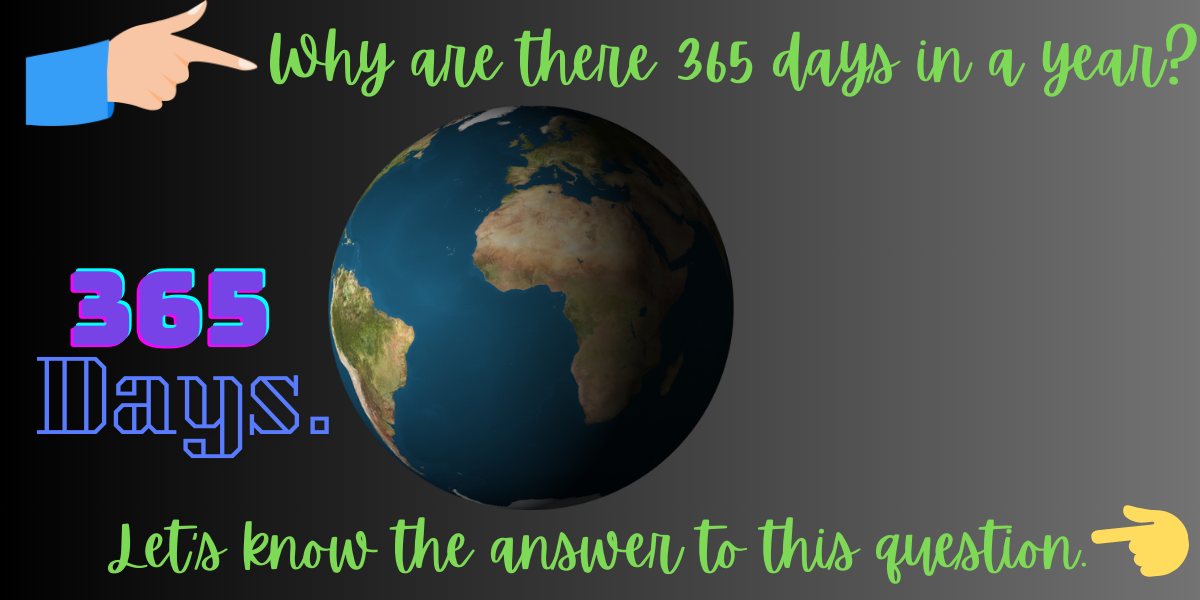Why are there 365 days in a year?
We often take the concept of a year having 365 days for granted, but it has deep astronomical and historical roots. Let’s explore this concept step by step.
1.Earth’s orbit around the Sun.
The primary reason a year has 365 days lies in the Earth’s journey around the Sun. This journey or parikrama takes approximately 365.25 days to complete. This period is known as the tropical year, which is the time it takes for the Sun to return to the same position in the seasonal cycle, such as from one spring equinox to the next.
2.Tropical Year.
Definition of tropical year:- The tropical year is a little less than 365.25 days, approximately 365.24219 days. It is defined by the time it takes for the Earth to complete one revolution around the Sun relative to the vernal equinox, which marks the beginning of spring in the Northern Hemisphere.
Significance: –The tropical year is important because it maintains the alignment of the calendar with the seasons. If we did not account for the additional 0.24219 days, our calendar would gradually fall out of sync with the seasons over time.
3.Calendar Adjustment.
To keep our calendar in sync with the tropical year, various calendar systems have been developed:-
Julian calendar:- Introduced by Julius Caesar in 46 BC, the Julian calendar added an extra day every four years, creating a leap year. This increased the average length of the year to 365.25 days. However, this system was slightly flawed because it did not account for the 0.00781-day discrepancy, resulting in a difference of about one day every 128 years.
Gregorian Calendar:- To correct the deviations of the Julian calendar, Pope Gregory XIII introduced the Gregorian calendar in 1582. This calendar introduced a more accurate system: a year is 365 days, but every four years an extra day (leap day) is added in February. Except for years that are divisible by 100, but not by 400. This correction makes the average year length 365.2425 days, which is very close to the tropical year.
4.Leap year.
Purpose:- Leap years compensate for approximately 0.25 extra days each year. Without leap years, our calendar would lose about six hours annually, causing a significant misalignment over the centuries.
Calculation:- Every four years there is a leap year, in which one day is added to the calendar year. However, to maintain accuracy, years divisible by 100 are not leap years unless they are also divisible by 400.
5.Historical and cultural influences.
Various cultures and civilizations have contributed to the development of the 365-day calendar:-
Ancient Egyptians:- The Egyptians were among the first to create a 365-day calendar based on the solar year.
Roman:- The Roman calendar evolved from a lunar to a solar-based system, eventually leading to the Julian calendar.
6.Astronomical observations.
The Sun and the Seasons:- The Earth’s tilt and its elliptical orbit around the Sun cause the seasons, which are important to agricultural societies. A calendar synchronized with the solar year ensures that the seasons occur at the same time each year.
Equinoxes and Solstices:- These astronomical events mark important points in Earth’s orbit. The spring equinox, in particular, is used to define the beginning of the tropical year.
Conclusion
The reason we have 365 days in a year lies in the Earth’s orbit around the Sun, which takes approximately 365.25 days.
Historical adjustments, particularly the introduction of the Julian and Gregorian calendars, refined our calendar system to ensure that it remained aligned with the tropical year. Leap years and complex rules help maintain this alignment, allowing our calendar to accurately reflect the changing seasons from year to year. Understanding this process reveals the complex interrelationship between astronomy and human ingenuity in timekeeping.
Frequently Asked Questions.
Yes, there are 365 days in a common year, but every four years a leap year has 366 days to adjust the calendar.
There are 365 days in a year because it takes Earth about 365.25 days to complete one orbit around the Sun, rounded down.
Earth orbits the Sun in approximately 365.25 days. To account for the extra 0.25 day, we add a leap day every four years.
The Ancient Egyptian calendar was a solar calendar with 365 days, consisting of 12 months of 30 days each, plus five extra days.
Equinoxes occur when day and night are equal; solstices mark the longest and shortest days of the year, in summer and winter, respectively.


